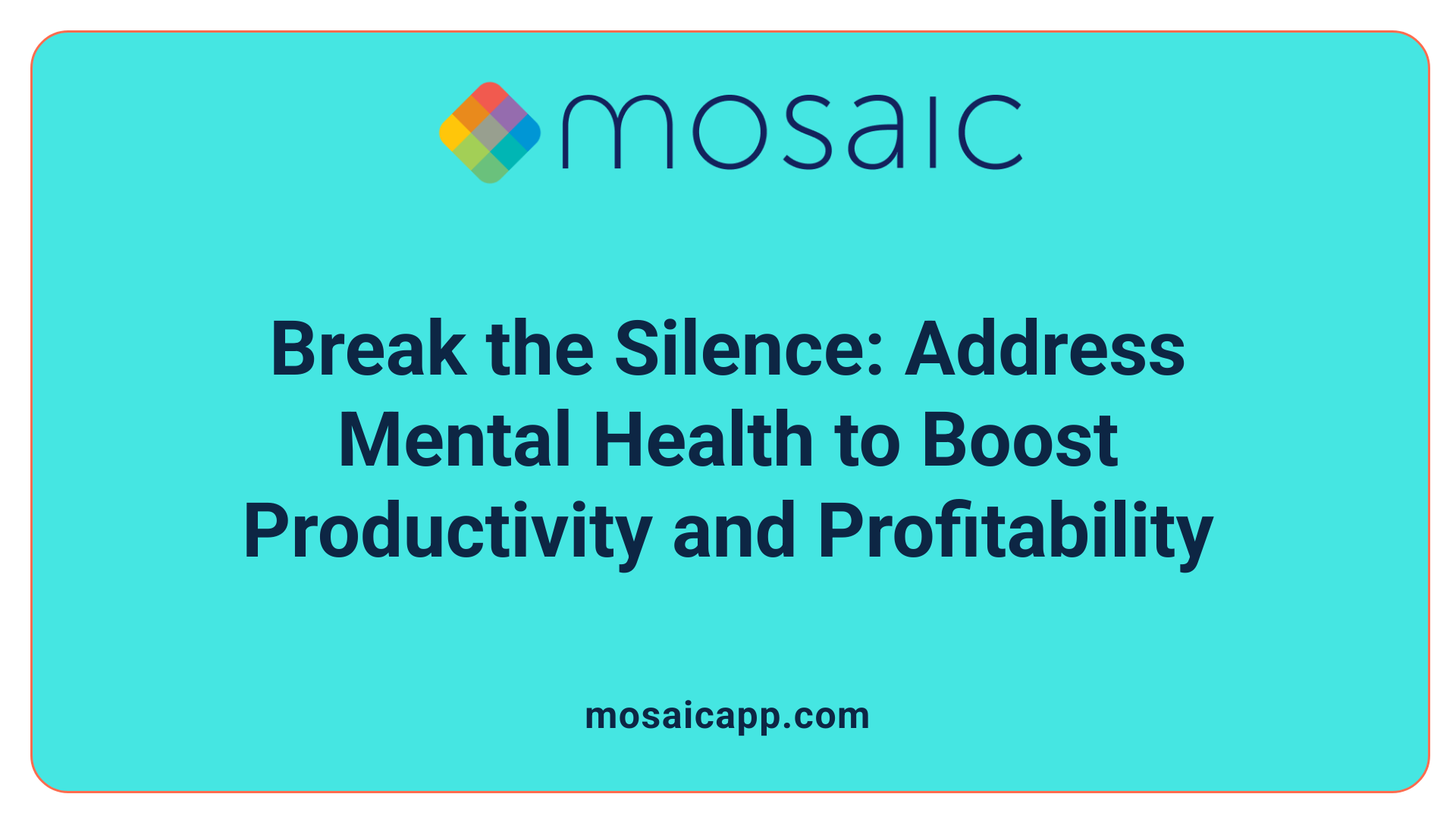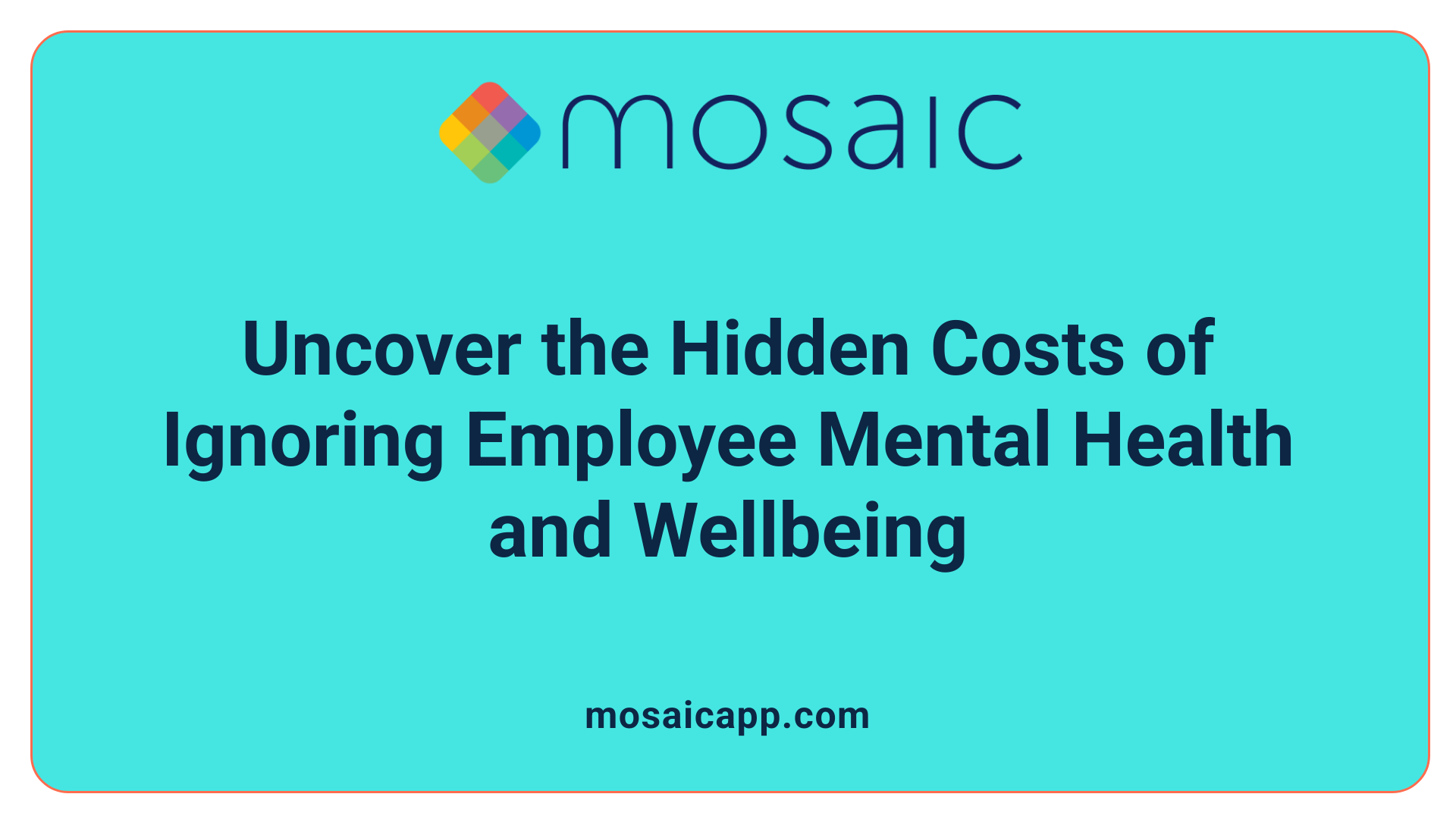Understanding the True Price of Overlooking Employee Health
As organizations strive for competitive advantage and project excellence, one critical factor often remains overlooked: employee wellbeing. Ignoring mental and physical health not only jeopardizes individual employees but also exerts enormous hidden costs on organizational performance. From increased absenteeism to diminished innovation, the consequences of neglect are profound. This article explores why addressing employee wellbeing is essential during project planning and how proactive strategies can safeguard organizational success.
The Economic and Productivity Toll of Ignoring Mental Health

How do mental health issues like depression, anxiety, and stress impact employee productivity?
Mental health challenges such as depression, anxiety, and stress significantly impair an employee's ability to perform effectively. These issues can lead to increased absenteeism, where employees miss work, and presenteeism, where they are physically present but not fully productive. For instance, depression alone causes employees to miss an average of 27 workdays annually, costing around $4,426 per employee in lost productivity.
Such conditions also diminish cognitive functions like focus, strategic thinking, and emotional regulation. Over time, this decline affects overall work quality, innovation, and decision-making. The stigma and lack of mental health support in many workplaces exacerbate the problems, fostering environments where stress and burnout thrive.
What are the global statistics on productivity loss due to mental health?
Worldwide, mental health issues cost an estimated $1 trillion annually in lost productivity. Anxiety and depression account for approximately 12 billion lost workdays each year. In the US alone, untreated mental health conditions lead to about $80-$100 billion in productivity losses yearly.
Research from Gallup shows that disengaged employees, often suffering from unmanaged mental health problems, cost the global economy nearly $8.8 trillion annually — nearly 9% of the world’s GDP. Furthermore, only about 15% of employees worldwide are engaged at work, implying a large portion are affected by their mental health, which hampers organizational efficiency.
Case studies showing financial impacts of employee mental health issues
Several corporations have highlighted the financial drain caused by neglecting mental health. For example, companies like Unilever, Johnson & Johnson, and Samsung have implemented mental health programs, reducing absenteeism and healthcare costs, while improving productivity. Conversely, organizations ignoring employee wellbeing face higher turnover rates. Replacing an employee can cost between 33% and 150% of their annual salary, adding significant expenses.
In India, mental health struggles cost employers approximately US$14 billion annually when factoring absenteeism, presenteeism, and turnover. Similarly, in the UK, one in five workers needed time off in the past year due to mental health issues stemming from stress or pressure.
| Aspect | Impact/Cost | Additional Notes |
|---|---|---|
| Productivity loss globally | $1 trillion annually | Due to anxiety, depression, and related conditions |
| Workdays lost in US | 200 million annually | Connected to untreated mental health issues |
| Employee turnover costs | 25-150% of annual salary per replacement | Higher when related to mental health problems |
| Healthcare savings potential | Up to 6:1 ROI from wellness programs | Investing reduces overall health costs and absenteeism |
| Employee engagement increase | Up to 20% after wellness initiatives | Leads to better performance and lower turnover |
Neglecting mental health not only affects individual employees but also imposes a substantial economic burden on organizations worldwide. Investing in mental wellness programs can mitigate these costs, fostering healthier, more engaged, and productive workforces.
Strategic Investment in Employee Wellbeing – A Competitive Advantage
What benefits can organizations expect from investing in employee health and wellness programs?
Investing in employee health and wellness initiatives yields significant advantages for organizations. Notably, companies can see decreases in absenteeism and healthcare expenditures, which directly translate into cost savings. Studies indicate that wellness programs can reduce sick days by up to 28% and cut overall health costs by 26%. Additionally, organizations experience decreased employee turnover; those prioritizing wellbeing report 25% lower turnover rates, saving on recruitment and training expenses.
Furthermore, wellness programs boost employee engagement and satisfaction. When employees have access to mental health support, physical fitness resources, and social wellbeing initiatives, they tend to be more committed and productive. Many employers also find that such programs enhance organizational culture, making their workplace more attractive to top talent, with 80% of job seekers considering company values related to wellness during their application process. Overall, investing in comprehensive wellness strategies supports healthier employees, lower operational costs, and a more dynamic and resilient organizational environment.
How does proactive wellness planning influence project planning outcomes?
Proactively integrating wellness policies into project planning promotes healthier work environments, which directly impact project success. Beginning with preemptive health assessments, companies can identify and mitigate risks early, reducing disruptions caused by health-related absenteeism or burnout. Implementing flexible schedules, encouraging work-life balance, and providing ergonomic workspaces help maintain high levels of employee energy and focus.
Additionally, embedding mental health support—such as Employee Assistance Programs and stress management initiatives—fosters emotional resilience among team members. Regular feedback mechanisms, including health surveys and biometric screenings, enable targeted interventions, heightening engagement and productivity.
Creating a culture that values wellbeing encourages open communication about stressors and obstacles, allowing management to adapt project timelines and resource allocations accordingly. This integrated approach prevents burnout, improves morale, and ensures project timelines are met with competent, motivated teams. Employing data-driven insights and preventive health measures ultimately enhances project outcomes by sustaining a healthy, engaged workforce committed to organizational success.
Risks and Costs of Overlooking Employee Wellbeing

What are the organizational risks and costs associated with ignoring employee health and wellness initiatives?
Ignoring employee health and wellness creates serious challenges for organizations. Without proper support, healthcare costs can skyrocket as untreated mental health conditions lead to more frequent doctor visits and chronic illnesses. Employees suffering from stress, depression, or burnout tend to take more sick days, increasing absenteeism and reducing overall productivity. Turnover rates also climb, as unhappy or overwhelmed staff are more likely to leave, incurring high recruitment and training expenses.
Focusing only on individual wellness programs without considering broader systemic issues, like workload, management practices, or workplace culture, often yields limited results. Persistent stress and burnout can become ingrained, impairing both employee performance and organizational reputation. Poor leadership behaviors and outdated work processes further worsen the situation, making wellness initiatives less effective.
Integrating well-being into organizational strategies is vital. Otherwise, the company risks long-term operational inefficiencies, safety lapses, and damage to its reputation. An environment that neglects worker health struggles to sustain productivity and innovation, risking its competitive edge.
What are the consequences of neglecting employee wellbeing on project success?
When employee wellbeing is overlooked, project outcomes suffer significantly. Stress and burnout hinder focus, creativity, and problem-solving abilities, leading to delays and lower-quality deliverables. Employees grappling with mental health issues are more prone to absenteeism, which can cause resource shortages and project delays.
A disengaged workforce also diminishes motivation and commitment, making it harder to meet deadlines and achieve project goals. This can damage client relationships and tarnish the company's reputation.
Overall, neglecting wellbeing not only hampers individual performance but also impacts the entire project pipeline, resulting in higher costs and compromised success. Incorporating wellbeing strategies into project management can support better outcomes and organizational resilience.
Building a Culture of Wellbeing for Sustainable Success

How can organizations proactively integrate wellness strategies into project planning to prevent negative outcomes?
To foster a healthy, resilient workforce, organizations must embed wellness strategies into every stage of project planning. This proactive approach begins with establishing comprehensive health and wellbeing policies from the start, ensuring that employee health considerations are prioritized alongside project goals.
Practical steps include promoting work-life balance through flexible scheduling options and creating ergonomic, comfortable work environments. Regular health assessments, such as biometric screenings and employee feedback surveys, enable early identification of stressors and health risks. These insights guide tailored wellness interventions, allowing organizations to address potential issues before they escalate.
Incorporating mental health support is crucial. Initiatives like Employee Assistance Programs, stress management workshops, and opportunities for social connection help build emotional resilience and reduce burnout levels.
Physical health resources, such as on-site fitness centers, access to healthy foods, and programs promoting smoking cessation or financial wellness, support overall wellbeing. These preventative measures foster a culture of openness and care.
Moreover, leveraging data-driven insights and maintaining open channels of communication encourage continuous improvement. When wellbeing is woven into the fabric of project execution, organizations not only reduce risks but also boost employee engagement, productivity, and organizational resilience in the face of challenges.
Prioritizing Wellbeing for Project Success and Organizational Resilience
The evidence overwhelmingly demonstrates that neglecting employee wellbeing incurs enormous costs—from financial losses to diminished project quality and organizational reputation. Implementing proactive wellbeing strategies during project planning is not just an ethical imperative but a strategic necessity. Organizations that embed health initiatives into their culture enjoy lower turnover, higher engagement, and improved performance. To foster sustainable success, leaders must recognize the critical role of employee wellbeing in shaping resilient, innovative, and productive organizations. Prioritizing mental and physical health during project development lays the foundation for long-term organizational health and competitive advantage.
References
- the costs of ignoring employee wellness
- The cost of not caring: Ignoring wellbeing carries a hefty price
- The Hidden Price of Ignoring Employee Well Being and ...
- The Cost of Not Investing in Employee Wellbeing Programs
- The Cost of Ignoring Mental Health in the Workplace
- How Ignoring Employee Wellbeing is Harming Your Business
- How to Avoid the Top 7 Costs of Poor Employee Wellbeing ...
- Mental health at work


